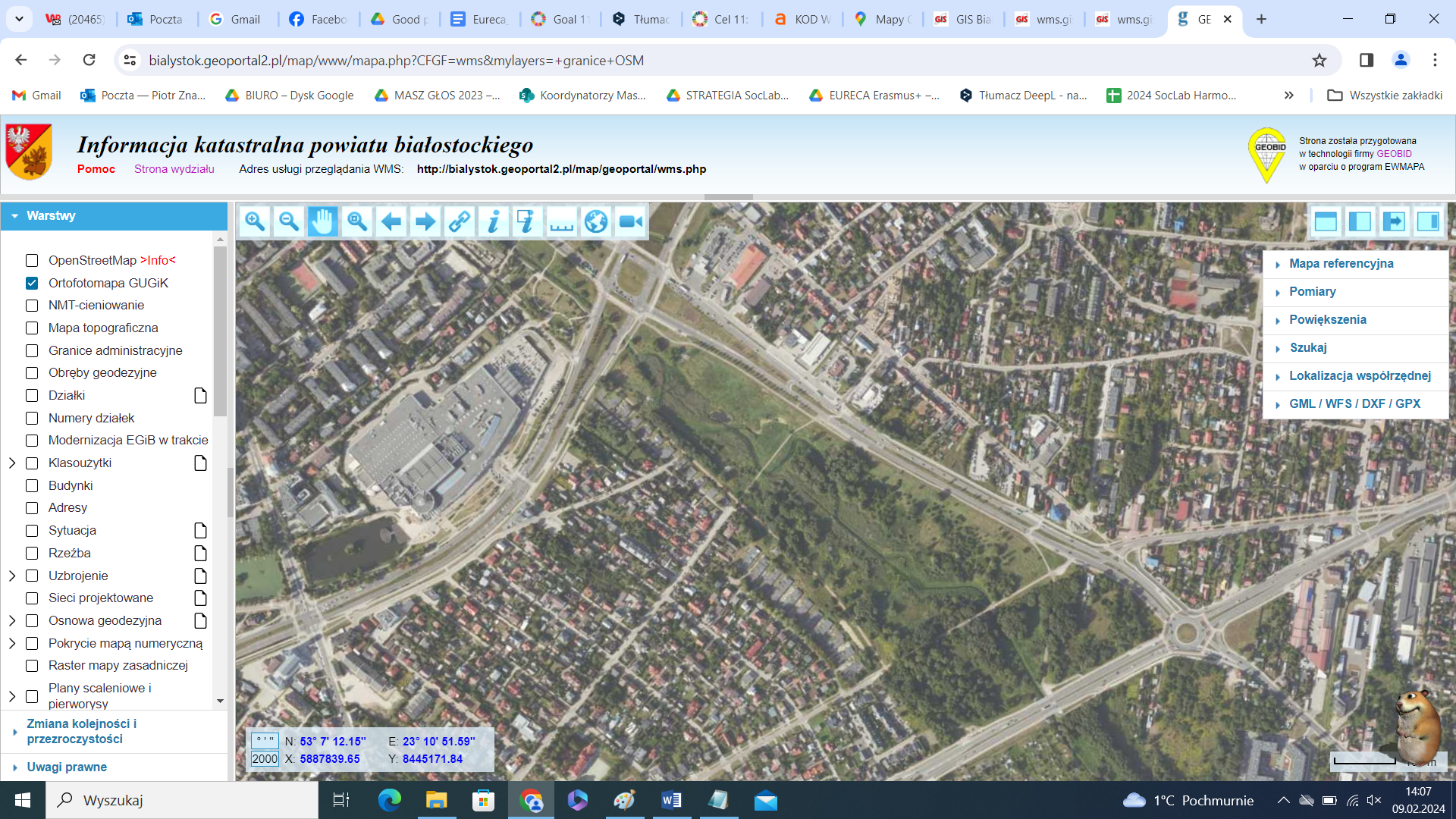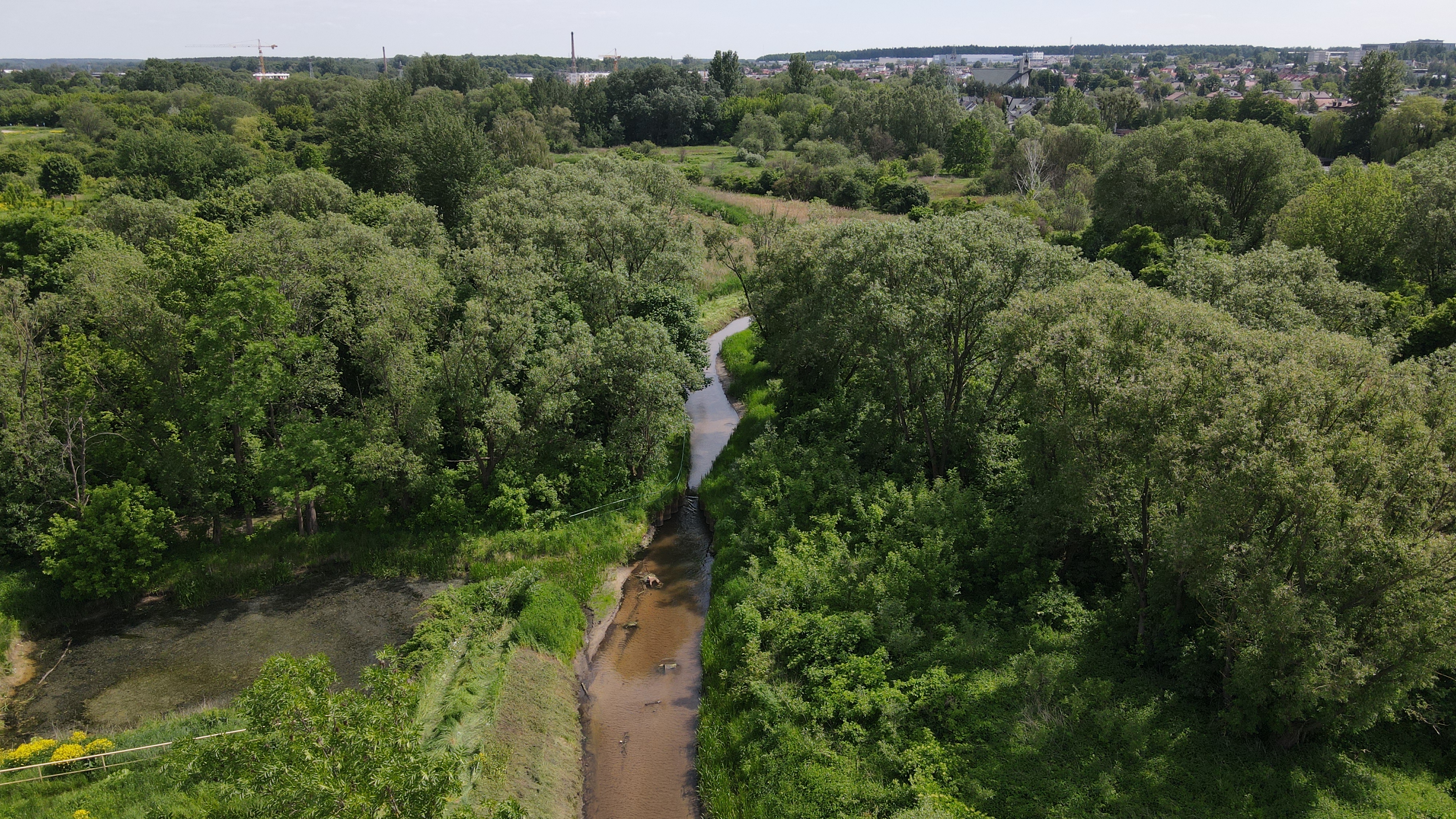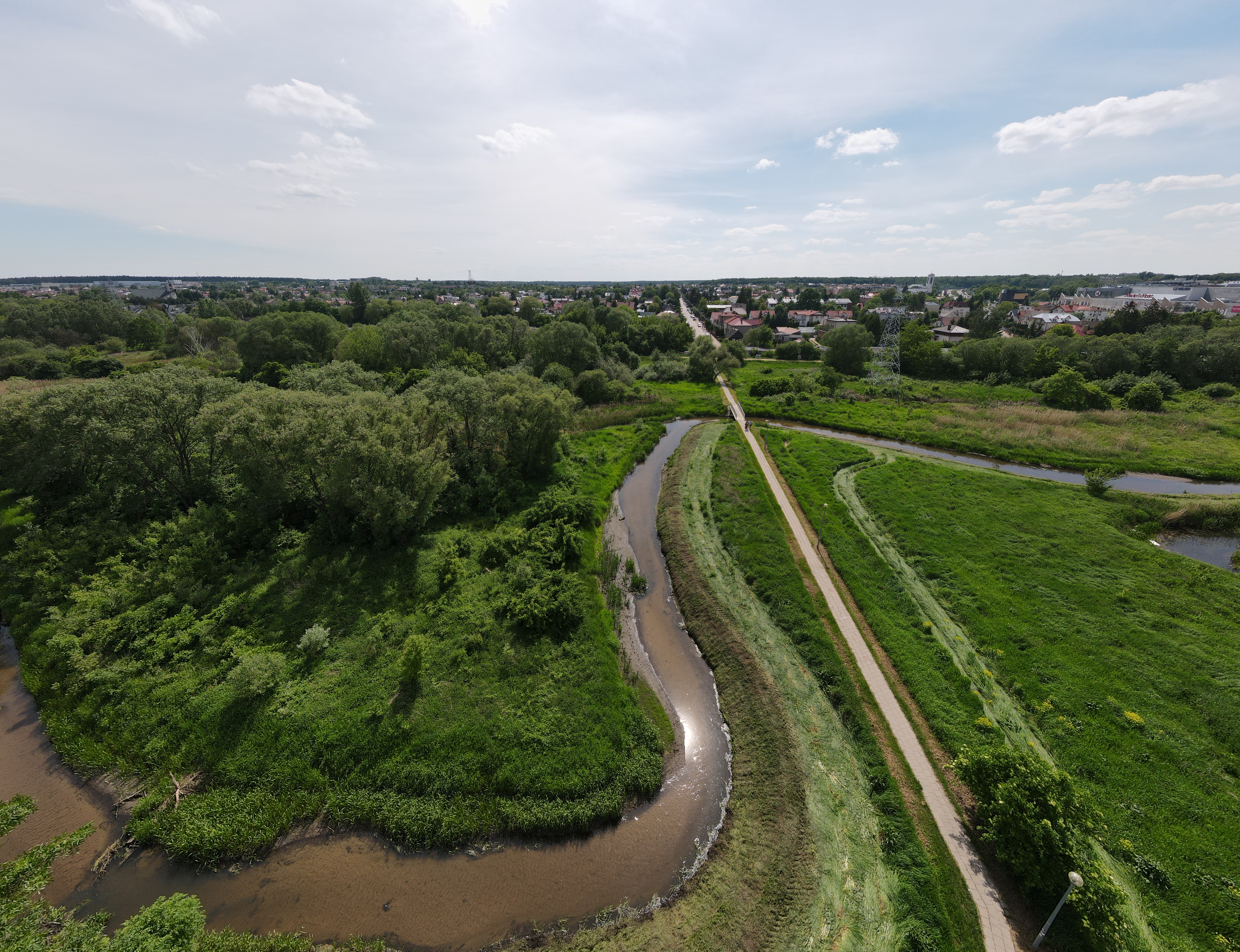EURECA
Good Practices




 Pictures:
Pictures:The Białą River after renaturalization.
Photos by Białystok City Council.
River restoration.
Country:Main Subject:
Description:
Rewilding and restoring the natural shape of the Biała river in Białystok, a city in eastern Poland, capital of the region Podlasie.
The primary aspect of the project involved rewilding and restoration of natural ecosystem processes. Activities included meandering, or the creation of meanders and winding bends in a section of the river where it previously ran straight. This not only helped to restore the river's original character but also provided a more diverse and ecologically rich habitat for flora and fauna.
Additionally, an oxbow lake was reinstated, serving as an additional retention area to hold water during periods of heavy rainfall. This allowed the river to store water, effectively reducing the risk of flooding.
A damming penstock was utilized to regulate the water level in the river. This mechanical device controlled the flow of water and maintained the optimal water level in a given section of the river. Through the damming valve, it became possible to precisely adjust the water level according to changing weather conditions, thus preventing potentially dangerous flooding. Ultimately, this enhanced the safety of the surrounding urban areas.
The investment not only contributed to the creation of a visually appealing environment but also addressed the challenges posed by changing climatic conditions. With increasingly frequent and intense rainfall, the city's water systems were put to the test. The work on the Biała River aimed to adapt to these changes by establishing a retention reservoir that effectively managed the flow of water, thereby minimizing the risk of flooding.
The effects of the project became evident shortly after its completion. New species of fish, plants, and birds emerged, while naturally valuable areas began to attract residents and tourists alike. Infrastructure development along the river, such as bicycle paths, the restoration of the place's natural character, and the establishment of green spaces, transformed this part of the Biala River into a welcoming environment for Bialystok residents.
Funded by the City of Białystok's budget, the work took place in 2015 and 2016.
The reconstruction of the Biala River, undertaken by the City of Bialystok, was one of the three projects honoured in 2022 in the General Directorate for Environmental Protection's competition for the Polish Landscape Award.
Reference links:
https://www.bialystokonline.pl/rzeka-biala-odzyskala-stare-koryto-inwestycje-doceniono-po-6-latach,artykul,132759,1,1.html
https://www.bialystok.pl/pl/wiadomosci/aktualnosci/przebudowa-rzeki-bialej-doceniona.html
https://inzynierbudownictwa.pl/renaturyzacja-rzek/
SDG direct/ indirect short justification:
Direct SDGs:
- SDG6. Clean water and sanitation.
Indirect SDGs:
- SDG 11. Make cities and human settlements inclusive, safe, resilient and sustainable.
Justification:
The activity meets Target 6.6. By 2020, protect and restore water-related ecosystems, including mountains, forests, wetlands, rivers, aquifers and lakes.
Indicator: 6.6.1 Change in the extent of water-related ecosystems over time
Keywords:
City:
Questions:
- Why are urban rivers subjected to rewilding and restoration?
- What roles do rivers and their adjacent areas play for urban inhabitants?
- What are the inherent functions of rivers within the urban environment?
Authors:
Piotr Znaniecki
Fundacja SocLab




